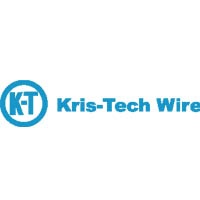1550 Cobb Industrial Dr. | P.O. Box 9098 | Marietta, GA 30065-2098
770-425-1355 (Phone) | 770-425-1354 (Fax) | info@alliedcorrosion.com (Email)
©2018 Allied Corrosion. All rights Reserved.
Made with ❤ by Mighty Good Marketing
Selected:
Tracer Wire (also known as Locating Wire) is without question underrated and underused. Used primarily by Gas, Water, Fiber Optic, and Sanitation companies, its main use is for locating buried plastic pipes and fiber optics.
Unfortunately, a lot of contractors will mistakenly use THHN Wire (Thermoplastic High Heat-resistant Nylon-coated wire) for this function, although it is a poor choice for many reasons.
Many times, plastic pipes or fiber optics are buried underground to connect to houses and other buildings. They’re used because of their strong flexibility under adverse conditions such as excess heat or cold, rainstorms, etc.
When one of these is used underground, you must have a wire that is durable, flexible, and has strong insulation next to the plastic pipe or fiber optics in case you ever need to locate them (hence the name Locating Wire). For instance, if there was a gas leak, the gas company needs to dig up the pipe in order to find the exact location of the problem.
This is where THHN is problematic. THHN doesn’t have the insulation necessary to hold up over time. Typical underground installations are expected to last up to 30 years. Nylon, the main covering of THHN, is very susceptible to water and moisture, causing additional breakdowns in the wiring under adverse conditions.
This takes a toll on THHN, which starts to wear down and erode, becoming more-or-less useless over the course of several years (fewer years than you’d like). In all likelihood, THHN will often need to be replaced once or even twice over the course of a building project’s life span.
With 30 to 45 mils of Polyethylene, Tracer Wire has all the flexibility of THHN, but with far better insulation and protection against underground conditions. Therefore, when the going gets tough on underground installation, Tracer Wire will still be there in the end.
Polyethylene offers a very strong insulation, often double or even triple that of THHN, so it can withstand even the toughest of underground conditions. Just as important, companies will save thousands of dollars and hundreds of valuable labor hours because they won’t have to dig up and replace Tracer/Locating Wire the way they will with THHN.
The only real case for using THHN for direct burial (even though it isn’t rated for it) is that it’s inexpensive. But when you consider future costs to repair and replace it, long-term costs often end up skyrocketing.
In addition, Tracer Wire/Locating Wire is much more affordable than a lot of people think. Even with all the added benefits, Tracer Wire costs only slightly more than THHN, with a huge upside in terms of increased insulation, heat-resistance, and durability.
Tracer Wire saves Fiber Optic, Gas, Water, or Sanitation companies thousands of dollars in the replacement of wire, and also valuable time and energy in the form of labor hours and wasted material. With Tracer Wire’s increased durability over 30+ years in an underground setting, it is by far the better choice long-term for any underground wiring project you might undertake.
Allied Corrosion Industries, Inc., is a supplier of Kris Tech Cathodic Protection Wire and Tracer Wire. See all available tracer wire products, and submit a request for quote directly from each product page. If you need materials selection support, call Allied at 1-800-241-0809.
Copper-Clad Steel Tracer Wire Stainless Steel Tracer Wire HMWPE Tracer Wire

1550 Cobb Industrial Dr. | P.O. Box 9098 | Marietta, GA 30065-2098
770-425-1355 (Phone) | 770-425-1354 (Fax) | info@alliedcorrosion.com (Email)
Made with ❤ by Mighty Good Marketing
We care about your privacy! In order to run a successful website, we are setting cookies and accessing and storing information on your device for various purposes. By continuing to browse this site, you are agreeing to our use of cookies.
If you wish to disable cookies, please visit our Privacy Policy for more information.
Got It! Thanks!Privacy policy